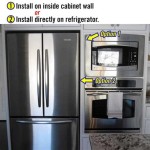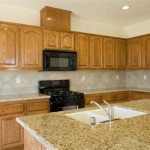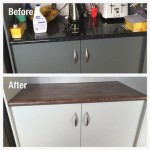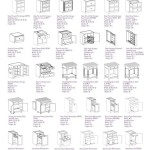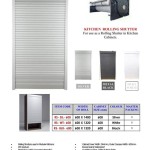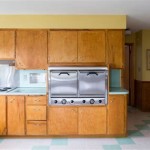Modern Kitchen Design: A Comprehensive Overview
Modern kitchen design emphasizes functionality, clean lines, and a minimalist aesthetic. It prioritizes user experience, efficient workflows, and the seamless integration of technology. This approach moves away from ornate detailing and cluttered spaces, favoring instead a streamlined and practical environment.
The hallmark of a modern kitchen is its ability to adapt to various lifestyle needs. It can serve as a central hub for cooking, dining, entertaining, and even working. This adaptability requires careful planning and consideration of space, lighting, materials, and appliances.
The evolution of kitchen design has been significantly shaped by advancements in technology and materials science. New materials offer enhanced durability, easier maintenance, and a wider range of aesthetic possibilities. Smart appliances and integrated systems contribute to increased efficiency and convenience.
Key Point 1: Emphasis on Clean Lines and Minimalism
One of the defining characteristics of modern kitchen design is its commitment to clean lines and minimalist principles. This translates to a reduction in visual clutter and an emphasis on horizontal and vertical planes. Cabinets often feature flat-panel doors without elaborate moldings or ornamentation.
Color palettes tend to be neutral, with whites, grays, and blacks dominating the scene. These colors create a sense of spaciousness and serenity, while also providing a versatile backdrop for accent colors and textures. Pops of color are often introduced through accessories, artwork, or strategically placed appliances.
Backsplashes are typically kept simple and understated. Subway tiles, glass panels, and solid surfaces are common choices. Avoidance of intricate patterns and busy designs ensures that the focus remains on the overall clean aesthetic.
Hardware, such as cabinet pulls and knobs, is often sleek and minimalist. Stainless steel, brushed nickel, and matte black finishes are popular options. The goal is to choose hardware that complements the overall design without drawing undue attention.
The absence of excessive ornamentation extends to lighting fixtures. Recessed lighting, pendant lights with simple geometric shapes, and under-cabinet lighting are preferred over elaborate chandeliers or sconces. The focus is on providing functional lighting that illuminates work surfaces and enhances the overall ambiance.
Storage is another critical aspect of achieving a minimalist aesthetic. Modern kitchens often incorporate clever storage solutions, such as pull-out shelves, drawer dividers, and pantry organizers, to maximize space and minimize clutter. These solutions help to keep countertops clear and create a more organized and efficient workspace.
The overall effect of this emphasis on clean lines and minimalism is a kitchen that feels spacious, uncluttered, and inviting. It is a space where cooking and entertaining can be enjoyed without distractions.
Key Point 2: Prioritizing Functionality and Ergonomics
Beyond aesthetics, modern kitchen design places a strong emphasis on functionality and ergonomics. The primary goal is to create a kitchen that is efficient, comfortable, and user-friendly. This involves careful consideration of the layout, work triangle, and appliance placement.
The work triangle, which connects the sink, refrigerator, and cooktop, remains a fundamental principle of kitchen design. The goal is to minimize the distance between these three key areas to reduce unnecessary steps and optimize workflow. The specific configuration of the work triangle will vary depending on the size and shape of the kitchen.
Island kitchens are a popular choice in modern design, as they provide additional counter space, storage, and seating. Islands can also serve as a central hub for food preparation, dining, and socializing. The size and shape of the island should be carefully considered to ensure that it complements the overall layout and enhances the functionality of the space.
Proper lighting is essential for a functional kitchen. Task lighting, such as under-cabinet lighting, is crucial for illuminating work surfaces. Ambient lighting, such as recessed lighting, provides general illumination for the entire space. Accent lighting can be used to highlight specific features or create a more inviting atmosphere.
Ergonomics plays a critical role in ensuring a comfortable and user-friendly kitchen. Countertops should be at a comfortable height for food preparation. Appliances should be positioned at convenient locations to minimize bending and reaching. Drawers and cabinets should be easy to open and close.
Smart appliances and integrated systems can further enhance the functionality of a modern kitchen. Smart refrigerators can track inventory and suggest recipes. Smart ovens can be controlled remotely and can even adjust cooking times based on the type of food being prepared. These technologies can save time, reduce waste, and make cooking more enjoyable.
The careful consideration of functionality and ergonomics ensures that the kitchen is not only aesthetically pleasing but also a pleasure to use. It is a space where cooking and other activities can be performed efficiently and comfortably.
Key Point 3: Integration of Technology and Smart Features
Modern kitchen design increasingly incorporates technology and smart features to enhance convenience, efficiency, and connectivity. This integration ranges from smart appliances to automated lighting systems and voice-controlled devices.
Smart appliances are a prominent feature of modern kitchens. Refrigerators with built-in screens can display recipes, manage grocery lists, and even stream entertainment. Ovens with precision temperature control and automated cooking programs ensure optimal results. Dishwashers with smart sensors can adjust water usage and cycle times based on the load.
Lighting systems can be automated and controlled remotely via smartphones or voice assistants. This allows for precise control over brightness levels and color temperature, creating customized lighting schemes for various activities. Motion sensors can automatically turn on lights when someone enters the kitchen, saving energy and providing added convenience.
Smart faucets can dispense water at precise temperatures and allow for touchless operation, reducing the spread of germs. Water filtration systems can provide instant access to purified water, eliminating the need for bottled water. These features contribute to a healthier and more sustainable kitchen environment.
Voice-controlled devices, such as smart speakers, can be integrated into the kitchen to control appliances, play music, and provide hands-free access to information. Voice commands can be used to turn on the oven, adjust the thermostat, or search for recipes, making cooking and other tasks more efficient.
Wireless charging stations can be incorporated into countertops or drawers, providing a convenient way to charge smartphones and other devices. This eliminates the need for unsightly cables and keeps countertops clutter-free.
The integration of technology and smart features transforms the kitchen into a connected and interactive space. It not only enhances convenience and efficiency but also elevates the overall cooking and dining experience.
Material selection is vital in modern kitchen design. Countertops frequently consist of quartz, granite, or stainless steel, which are prized for their durability, ease of cleaning, and resistance to heat and scratches. Cabinetry often features sleek, flat-panel designs in materials like laminate, wood veneer, or painted MDF (Medium-Density Fiberboard), balancing cost-effectiveness with aesthetic appeal.
Flooring choices may include tile, hardwood, or concrete, each offering unique visual and functional qualities. Tile provides durability and water resistance, making it suitable for areas prone to spills. Hardwood adds warmth and elegance, while concrete offers a modern, industrial look.
Space optimization is a recurring motif in modern kitchen design. Open floor plans are common, fostering social interaction and creating a sense of spaciousness. Islands and peninsulas not only offer additional workspace and storage but also serve as transitional elements between the kitchen and adjacent living areas.
Ventilation systems are typically integrated seamlessly into the overall design. Range hoods are often sleek and minimalist, effectively removing cooking odors and smoke without detracting from the aesthetic. Downdraft ventilation systems, which are located behind the cooktop, offer an alternative solution for kitchens where a traditional range hood is not desired.
Sustainability is an increasingly important consideration in modern kitchen design. Energy-efficient appliances, water-saving fixtures, and the use of sustainable materials contribute to a more eco-friendly kitchen. LED lighting, which consumes significantly less energy than traditional incandescent bulbs, is a common choice.
Modern kitchen design is characterized by its thoughtful integration of form and function. It is a space where aesthetics, technology, and ergonomics converge to create a practical, comfortable, and visually appealing environment.

Modern Kitchen Ideas Oppolia

The Beauty Of Contemporary Kitchens Modern Design For Living

What Is Modern Kitchen Design

Top 10 Modern Kitchen Design Trends Life Of An Architect

What Is Modern Kitchen Design

8 Elements Of A Modern Kitchen

Stunning Modern Kitchen Ideas In 5 Beautiful Diffe Styles Laura U Design Collective

What Is A Modern Kitchen Design Amp How To Get The Perfect One

40 Modern Kitchen Design Ideas

Tips For Designing A Modern Kitchen Norfolk Bath
Related Posts

